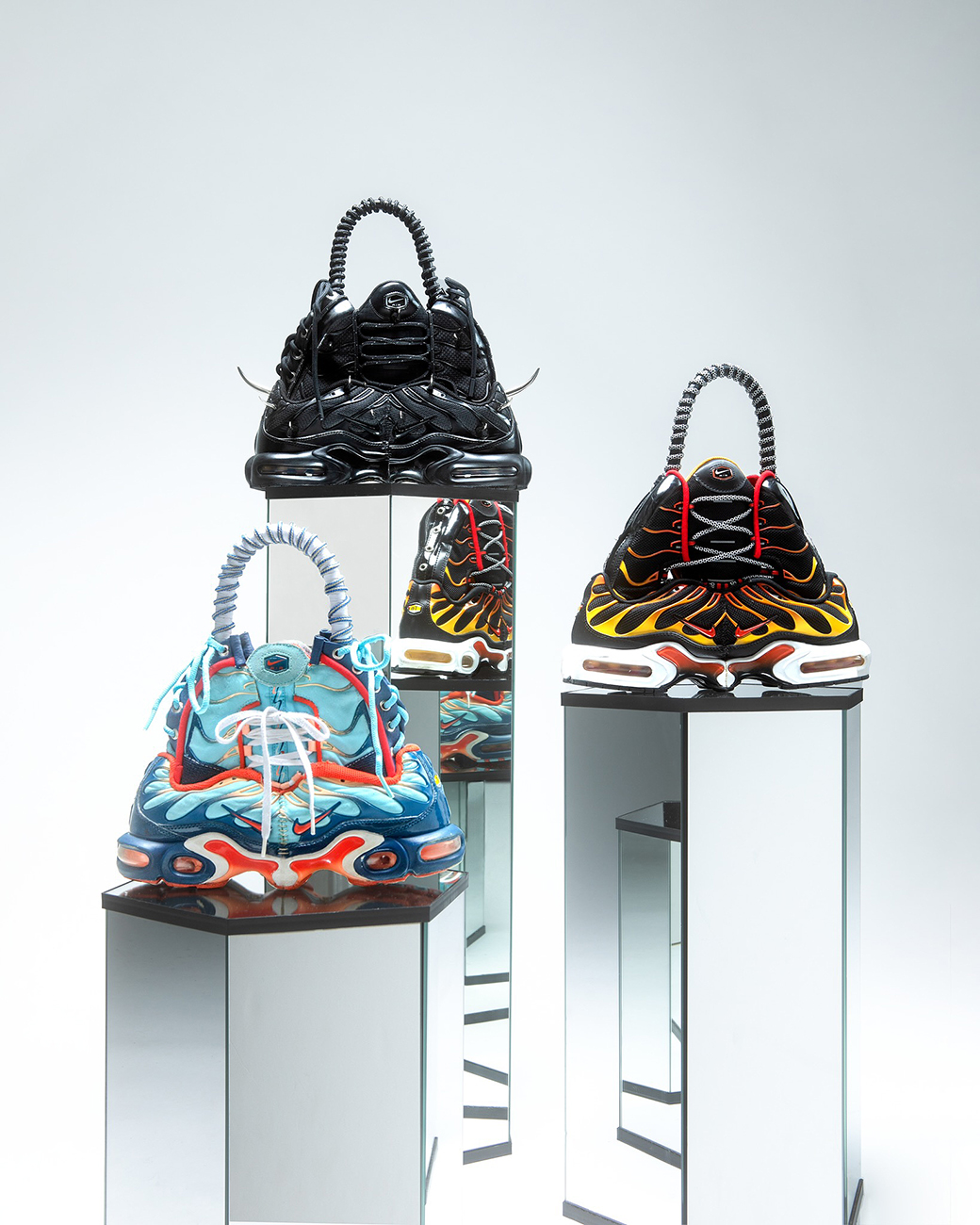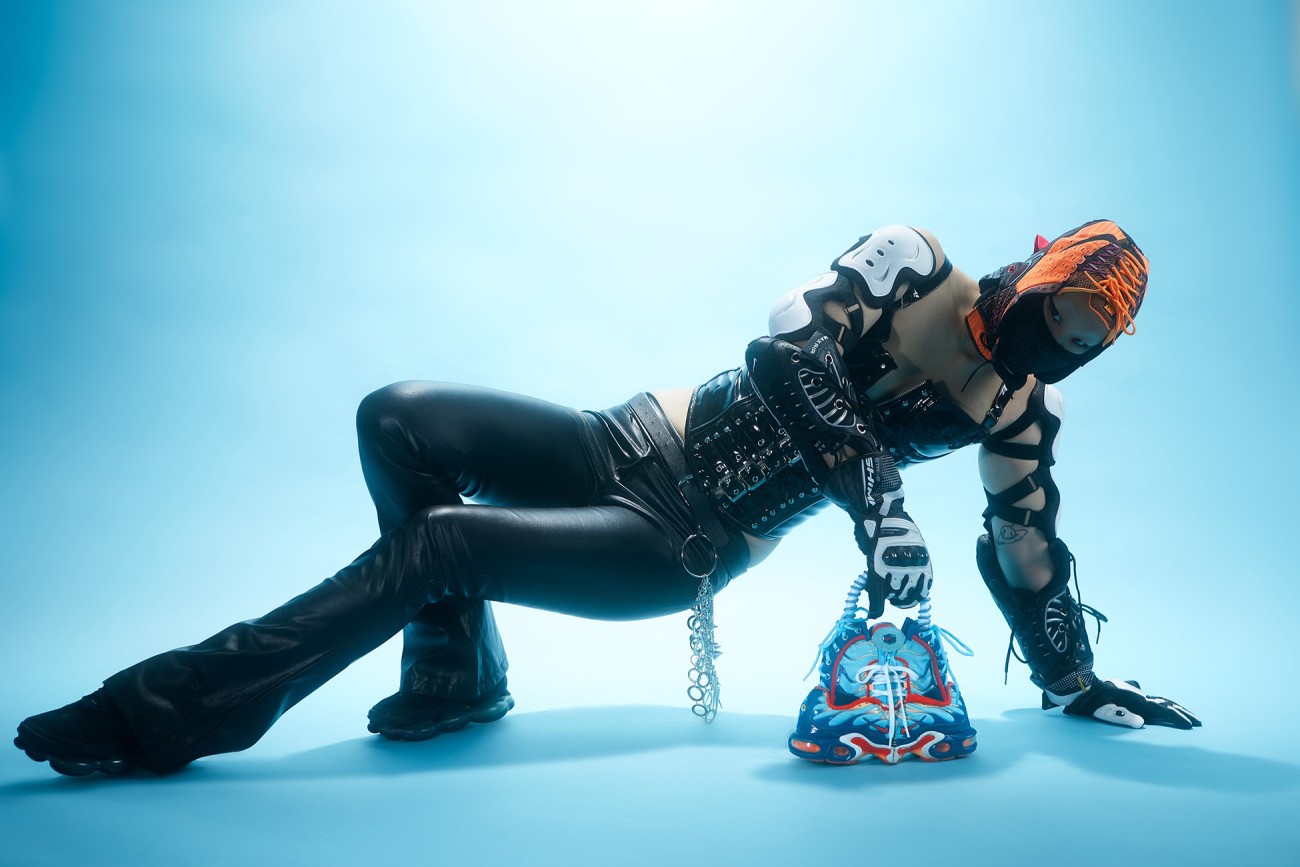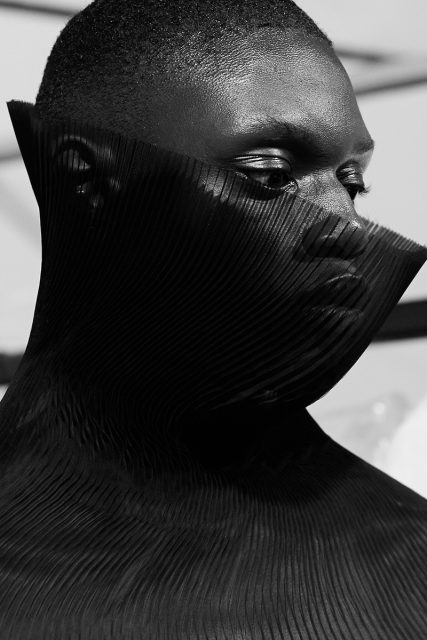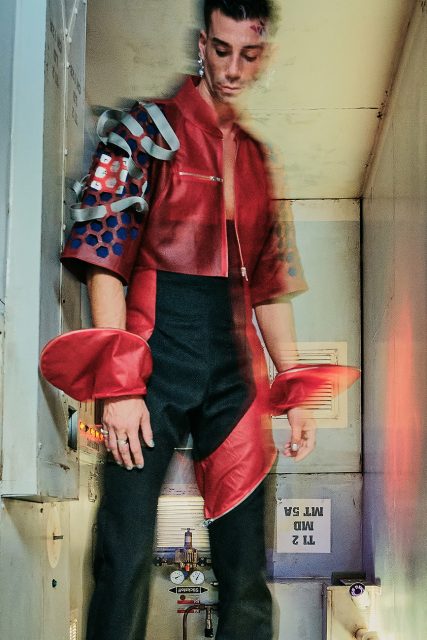26-year-old All Amin relocated from Nuremberg to Berlin four years ago for a compulsory fashion internship. Whilst working in Berlin, she began traversing the scope of sustainable fashion, which led to the birth of the label HARAM. Avantgarde in nature, the designs span from handmade Kurdish headpieces to upcycled trainer corsets and hello kitty “fuck-off” football scarves – the heterogeneity of All’s works never ceases to make us marvel. But the lengths of her creativity don’t stop there – self-described as a “creative allrounder”, when she isn’t finding new items to upcycle, she is sketching tattoo designs and inking Berliners.
Since All and her family were forced to seek refuge from war and oppression, she admits that the fashion world once seemed unattainable. Yet, she has proved otherwise – even through such adversity, her ingenuity and drive have led her to prosper. “I didn’t conventionally start my brand”, she says, “my basic requirements, unfortunately, didn’t make it easy for me to let my brand grow faster. But still, I’m patient with myself and my situation”. Although she recently dropped out of her fashion course and is running HARAM alone, the label has quickly gathered support in Berlin, which we are certain will continue.
HARAM’s items have already been featured in previous Œditorials, but this is the first time we had the chance to talk directly with All. In this feature article, we cover the launch of HARAM’s trainer handbags, the prospects of sustainable fashion, and plans to expand.
 |
 |
Œ: What was your journey into fashion? How/When did you know you wanted to get into fashion?
All: To be honest, I’ve never taken fashion seriously enough to consider becoming a fashion designer. From a young age, I found the fashion world unaffordable for people like me. Growing up as a refugee child, other topics were more present than fashion. But fashion in the context of a political statement has aroused my interest for many years.
That’s how I somehow ended up in fashion via many different detours. Dissatisfied with my life situation at the time, I wanted to take the step of further developing myself creatively and changed my course of study from civil engineering to the fashion industry. Since then, fashion has challenged me to face my fears and give the world a part of me that can even enrich or inspire others. That’s what has been driving me until now.
Œ: What are the core values of your brand and what do you hope to achieve with it?
All: HARAM is here to break the stereotype of sustainable fashion and bring more visibility to the upcycling agenda. It doesn’t have to look eco to be sustainable. I noticed how differently people perceived upcycling after seeing my range of designs. That’s when I realised how much potential upcycling has in the big sustainability discussion, especially for younger generations. If we can get the next generation excited about the idea that sustainable fashion can look sick and be worth consuming instead of new fashion, hopefully, there will be a bigger shift in the long run.
Œ: Who/what inspires you the most?
All: For me, there is no “most”. It’s always the combination of my impressions from art, fashion, literature, music, philosophy, and social and political work.
Œ: Tell us more about this editorial – how did you envision this? What’s the backstory?
All: The project KOPF IST GEFICKT ABER OUTFIT IST NICE deals with the feelings of today’s generation. We will all have to deal with the long-term effects of climate change in due course. And above all, we are also aware that we are not so innocent and continue to support one of the biggest polluting industries, namely the fashion industry, through our consumption habits and behaviour. We have become so used to our Western standard of living that it is difficult for most of us to give it up. Going without chic clothes is almost impossible. And this is exactly where HARAM tries to bridge the gap between looking dope and being sustainable at the same time. In this sense: Headaches are inevitable for our generation, but at least we still manage to look good doing it!
 |
 |
Œ: You’re currently launching trainer bags, which are the focal part of this editorial – How’s that going?
All: I’m still in the process of producing the products. The next step will be to ship my sneaker bags to artists/musicians who inspire me and hope that once my work is released there will be an increase in demand from the right audience.
Œ: What is your current process – are you doing designs to order or do you create full collections?
All: I am working on so-called “mini-collections” which I now try to publish weekly. Creating limited edition one-offs and dropping them every Sunday night will be my new strategy. Thanks to my ADHD, I get bored of the same designs so quickly that I try to keep prototyping them to stay in the workflow. But I’m also doing customised pieces when requested.
Œ: Where do you see yourself in 5 years? Where would you like to take HARAM?
All: Hopefully to a place where HARAM consists of a permanent team made up of the right people, who see the potential behind the brand. And through successful cooperation, we will have managed to establish a functioning, exemplary brand with a sense of sustainability on the international market whilst also impacting the next generation of consuming upcycled fashion.
 |
 |
Creative direction, Styling, Hair and Makeup – All Amin
Photography – Florin Elbel
Model & Styling Assistant – Sweezy Deville
Lighting – Marcus Fabian
With special thanks KMX.STUDIO






